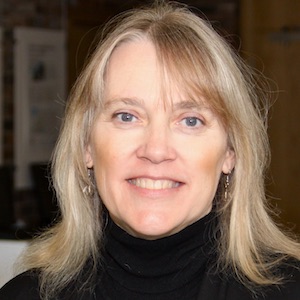Evaluating Methods for Teaching Accessibility in University Computing-Degree Programs
This website disseminates findings and resources from a research project funded by the National Science Foundation (NSF) to examine the efficacy of several methods of teaching computing students about accessibility for people with disabilities. This evidence may guide universities in making curricular changes to address the issue of accessibility within computing degree programs. This website includes documentation of the educational interventions we evaluated in the project, including lecture slides, assignments, project topics, and student-produced videos about their team projects. Computing faculty at other universities are welcome to use these resources in their classes or research. We ask that faculty from other universities please complete a survey about this website.
Project Details
The World Health Organization estimates that 15% of the world’s population has some form of disability; this number is rising due to population growth and improvements in medical care leading to longer lifespans. While computing devices and the Internet have become essential for full participation in society, many of these technologies are not accessible for people with disabilities. As computing technology has become essential to society, future computing professionals need skills in this area.
In the context of a required human-computer interaction course within several computing degree programs at a U.S. university, we compared whether various educational interventions increased students' perceptions about computing accessibility.
- Baseline: Undergraduate computing students participate in a required course on human-computer interaction, with a semester-long team project to design software or a website.
- Same as above, with one week of lectures on computer accessibility during the course.
- Same as above, with the team-project topic related to accessibility or inclusion.
- Same as above, with some amount of first-hand personal interaction during the semester with an end-user with a disability during the design or evaluation of the project.
- Same as above, with a student with a disability as a full member of the project team.
While education researchers had investigated several of these types of interventions in prior work, the literature had lacked a systematic comparison of the effectiveness of these interventions. The aim of this project is to gather evidence of the efficacy of these interventions, which universities could use to select among these options, based on their available resources.
Resources
This website is created to enable interventions to be replicated at other universities. Specifically, this website includes curricula materials used in intervention (2) and a collection of student-produced videos from accessibility-related team projects (intervention 3). Our publications below provide additional details about the other interventions.
Publications
Qiwen Zhao, Vaishnavi Mande, Paula Conn, Sedeeq Al-khazraji, Kristen Shinohara, Stephanie Ludi, and Matt Huenerfauth. 2020. Comparison of Methods for Teaching Accessibility in University Computing Courses. In The 22nd International ACM SIGACCESS Conference on Computers and Accessibility (ASSETS '20). Association for Computing Machinery, New York, NY, USA, Article 6, 1–12. DOI:https://doi.org/10.1145/3373625.3417013
[ Available on ACM Digital Library]
Paula Conn, Taylor Gotfrid, Qiwen Zhao, Rachel Celestine, Vaishnavi Mande, Kristen Shinohara, Stephanie Ludi, and Matt Huenerfauth. 2020. Understanding the Motivations of Final-year Computing Undergraduates for Considering Accessibility. ACM Trans. Comput. Educ. 20, 2, Article 15 (May 2020), 22 pages. DOI:https://doi.org/10.1145/3381911
[ Available on ACM Digital Library]
Stephanie Ludi, Matt Huenerfauth, Vicki L. Hanson, Nidhi Palan, and Paula Garcia. 2018. Teaching Inclusive Thinking to
Undergraduate Students in Computing Programs. In Proceedings of the 2018 ACM SIGCSE Technical Symposium on Computer Science
Education (SIGCSE'18). ACM, New York, NY, USA, 717-722. DOI: https://doi.org/10.1145/3159450.3159512
[Available on ACM Digital Library]
Nidhi Rajendra Palan, Vicki L. Hanson, Matt Huenerfauth, and Stephanie Ludi. 2017. Teaching Inclusive Thinking in Undergraduate
Computing. In Proceedings of the 19th International ACM SIGACCESS Conference on Computers and Accessibility (ASSETS '17).
ACM, New York, NY, USA, 399-400. DOI: https://doi.org/10.1145/3132525.3134808
[ Available on ACM Digital Library]
Research Team
The senior personnel on this project include researchers and educators in accessibility:

Dr. Matt Huenerfauth is a Professor at Rochester Institute of Technology (RIT) in the School of Information (the iSchool) of the B. Thomas Golisano College of Computer and Information Sciences. His research is on the design of technology to benefit people who are deaf or have low levels of written-language literacy, and his student research team operates bilingually in English and American Sign Language (ASL). He is a five-time recipient of the Best Paper Award at the ACM SIGACCESS Conference on Computers and Accessibility, the major computer science conference on assistive technology for people with disabilities, and he is a former editor-in-chief of the ACM Transactions on Accessible Computing (TACCESS), the major journal in the field of computer accessibility for people with disabilities. In 2018, RIT awarded him the Trustees Scholarship Award, the university’s highest honor for a faculty member in recognition of research achievements.

Dr. Stephanie Ludi is a Professor in the department of Computer Science and Engineering at University of North Texas; she has been PI for various NSF-funded projects (e.g., CNS-0634319, CNS-0837493) and a CE21 planning project (CNS-1151713) to promote computing for students with visual impairments and disabled students, respectively. She has extensive experience in using innovative technology in instruction, such as LEGO Mindstorms and tablets. In addition, she conducts research on tool support to make computer science, math and science more accessible to those with visual impairments. Dr. Ludi also has more than ten years supervising senior projects and prior experience teaching the RIT Department of Software Engineering’s undergraduate course in HCI (SWEN 444 Human-Centered Computing). Dr. Ludi’s work with JBrick, and ECS will further increase access to Computer Science education.

Dr. Vicki Hanson is the CEO of the Association for Computing Machinery (ACM) and a Distinguished Professor Emerita of RIT. Her academic career spans RIT, a professorship at the University of Dundee in the UK, and several years at IBM’s Thomas J. Watson Research Center in New York, where she founded and managed IBM’s Accessibility Research group. At IBM she created the HandsOn software, the first bilingual ASL/English educational software for deaf children. The Accessibility Research group created software solutions for people with a range of disabilities, including the first accessible virtual world game, PowerUp, and the accessibilityWorks software to make the Web more accessible to persons with disabilities. Hanson is active in many aspects of the HCI research community, having served on multiple agenda setting research advisory boards in both the United States and the United Kingdom. She has received numerous awards from academic, industrial, and disability organizations.

Dr. Kristen Shinohara is an Assistant Professor in the School of Information (the iSchool) in the B. Thomas Golisano College of Computing and Information Sciences at the Rochester Institute of Technology. Her research focuses on how to design technologies usable by people with disabilities, specifically, in how to improve accessible design to include social aspects of technology use. She developed the Design for Social Accessibility (DSA) perspective, which includes consideration for social situations experienced by people with disabilities. Recent projects also include investigating how to make research and design processes accessible to people with disabilities, understanding how accessibility is taught in computing in higher education, and how accessibility knowledge is used by technology professionals.
